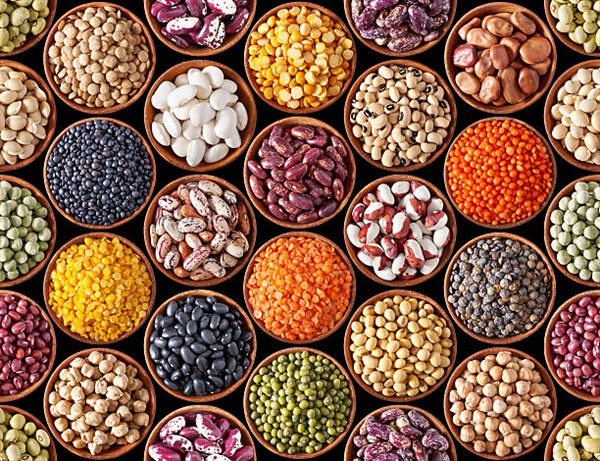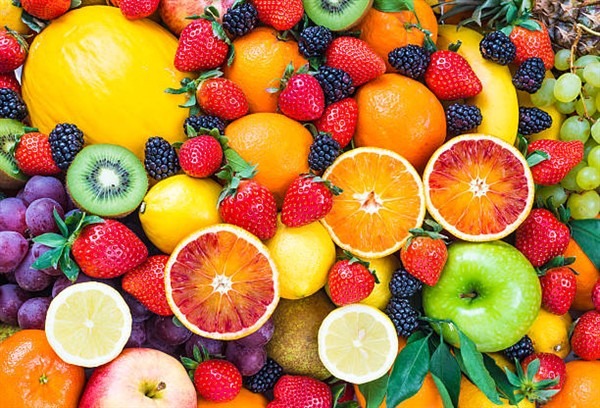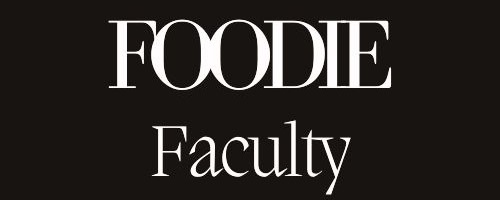Introduction
In the realm of nutrition, dietary fiber often takes a backseat to its flashier counterparts like protein, vitamins, and antioxidants. Yet, this unassuming nutrient plays a crucial role in our overall health, particularly in maintaining digestive wellness and preventing chronic diseases.
In this comprehensive article, we’ll shine a spotlight on dietary fiber and present a diverse array of fiber-rich foods that can transform your diet and benefit your well-being.
What Is Dietary Fiber?
Before we dive into the world of fiber-rich foods, let’s take a moment to understand what dietary fiber is and why it’s so essential to our health.
Definition and Types of Dietary Fiber:
Dietary fiber is a non-digestible carbohydrate found in plant-based foods. There are two primary types of dietary fiber: soluble and insoluble. Soluble fiber dissolves in water, forming a gel-like substance in the digestive tract, while insoluble fiber remains unchanged as it passes through the digestive system.
How Fiber Is Different from Other Nutrients:
Unlike carbohydrates, proteins, and fats, which provide calories (energy) when digested, fiber passes through the digestive system relatively intact, without providing calories. Instead, it offers numerous health benefits.
The Recommended Daily Intake of Fiber for Adults:
The recommended daily intake of fiber for adults varies by age and gender but generally falls between 25-38 grams per day. Unfortunately, many people fall short of meeting these recommendations.
Benefits of a High-Fiber Diet
Now that we’ve established what dietary fiber is let’s explore why it’s crucial for maintaining good health.
Improved Digestive Health:
Fiber is a hero when it comes to promoting regular bowel movements and preventing constipation. It adds bulk to the stool, making it easier to pass.
Weight Management and Appetite Control:
High-fiber foods tend to be filling, helping you feel satisfied after meals and reducing the likelihood of overeating or snacking between meals.
Lowered Risk of Chronic Diseases:
Consuming a fiber-rich diet has been linked to a reduced risk of chronic diseases, including heart disease, type 2 diabetes, and certain types of cancer.
Enhanced Gut Microbiome and Immune Function:
Fiber serves as food for beneficial gut bacteria, promoting a healthy gut microbiome. A balanced gut microbiome is associated with improved immune function and overall well-being.
Fiber-Rich Foods: Soluble Fiber Sources
Now that we understand the importance of dietary fiber, let’s explore some fiber-rich foods, starting with those high in soluble fiber.
Oats: Oats are a nutritional powerhouse, packed with soluble fiber, particularly a type called beta-glucan. This fiber has been shown to help lower cholesterol levels and stabilize blood sugar levels. A bowl of oatmeal for breakfast can be a nutritious and filling way to start the day.
Legumes: Beans, lentils, and chickpeas are excellent sources of soluble fiber. They are not only rich in fiber but also provide plant-based protein, making them a staple in vegetarian and vegan diets. Incorporating legumes into soups, stews, salads, and dips can add a significant fiber boost to your meals.
Fruits: Several fruits are noteworthy sources of soluble fiber, often found in their skins. Apples, for example, are rich in pectin, a type of soluble fiber known for its ability to help regulate bowel movements and promote a feeling of fullness. Oranges and berries also offer soluble fiber benefits.
Vegetables: Certain vegetables, including carrots, Brussels sprouts, and sweet potatoes, contain substantial amounts of soluble fiber. These veggies not only contribute to your fiber intake but also provide a wealth of vitamins, minerals, and antioxidants.

Fiber-Rich Foods: Insoluble Fiber Sources
In addition to soluble fiber, insoluble fiber is another essential component of a healthy diet. Let’s explore some of the best sources of insoluble fiber.
Whole Grains: Whole grains like brown rice, quinoa, and whole wheat bread are excellent sources of insoluble fiber. They retain the bran layer, which is rich in insoluble fiber, vitamins, and minerals. These grains make a wholesome base for a variety of meals.
Nuts and Seeds: Almonds, flaxseeds, and chia seeds are packed with insoluble fiber. They not only provide a delightful crunch to your dishes but also offer healthy fats, protein, and a variety of nutrients. Sprinkle these seeds on your yogurt, oatmeal, or salads for a fiber boost.
Vegetables: Broccoli, kale, and cauliflower are examples of vegetables rich in insoluble fiber. These cruciferous vegetables are celebrated for their nutritional density, offering a blend of fiber, vitamins, and antioxidants.
25 Soluble and Insoluble Foods that are Rich in Fiber
Soluble Fiber-Rich Foods:
- Oats: Oatmeal is a classic source of soluble fiber, particularly beta-glucans.
- Apples: The skin of apples contains pectin, a type of soluble fiber.
- Citrus Fruits: Oranges, grapefruits, and lemons are rich in soluble fiber, such as pectin.
- Berries: Blueberries, strawberries, and raspberries are packed with soluble fiber and antioxidants.
- Legumes: Beans, lentils, and chickpeas are excellent sources of soluble fiber and plant-based protein.
- Nuts: Almonds and walnuts offer a combination of soluble and insoluble fiber.
- Flaxseeds: These tiny seeds are a great source of soluble fiber and healthy fats.
- Chia Seeds: Chia seeds are rich in soluble fiber and can absorb large amounts of liquid.
- Psyllium Husk: Often used as a dietary supplement, psyllium husk is high in soluble fiber.
- Carrots: Carrots contain soluble fiber in addition to vitamins and antioxidants.
- Sweet Potatoes: These root vegetables provide both soluble and insoluble fiber.
- Brussels Sprouts: These cruciferous vegetables are high in soluble fiber and vitamins.
- Barley: Pearl barley is a grain that contains soluble fiber, particularly beta-glucans.
- Beets: Beets offer soluble fiber and are rich in antioxidants.
- Okra: Okra is known for its mucilaginous texture, which is a source of soluble fiber.
Insoluble Fiber-Rich Foods:
- Whole Wheat: Whole wheat products, including bread and pasta, are high in insoluble fiber.
- Brown Rice: Brown rice contains bran, which is a source of insoluble fiber.
- Quinoa: Quinoa is a versatile grain that provides both soluble and insoluble fiber.
- Kale: This leafy green vegetable is rich in insoluble fiber, vitamins, and minerals.
- Broccoli: Broccoli offers a good amount of insoluble fiber and is a nutritional powerhouse.
- Cabbage: Both red and green cabbage are high in insoluble fiber.
- Corn: Corn kernels are a great source of insoluble fiber.
- Celery: Celery stalks are known for their crunch and insoluble fiber content.
- Whole-Grain Cereals: Whole-grain breakfast cereals often contain a significant amount of insoluble fiber.
- Eggplant: Eggplant, also known as aubergine, is a vegetable with a notable amount of insoluble fiber.
Remember that a healthy diet includes a balance of both soluble and insoluble fiber for optimal digestive health and overall well-being.

Combining Soluble and Insoluble Fiber
While it’s valuable to appreciate the benefits of both soluble and insoluble fiber, it’s essential to remember that many fiber-rich foods contain a combination of both types. Consuming a variety of these foods helps ensure you reap the full spectrum of fiber benefits.
The Benefits of Consuming a Variety of Fiber-Rich Foods:
Different fiber sources offer unique health advantages. Soluble fiber can help manage cholesterol levels and blood sugar, while insoluble fiber promotes regular bowel movements and digestive health.
How to Create Balanced Meals That Include Both Types of Fiber:
Incorporating both soluble and insoluble fiber into your diet can be as simple as enjoying a bowl of oatmeal topped with fresh berries and flaxseeds for breakfast or crafting a hearty salad with chickpeas, kale, and carrots for lunch.
Tips for Increasing Fiber Intake
As you embark on your journey to boost your fiber intake, consider these tips to make the transition smoother and more enjoyable.
Gradual Introduction of Fiber-Rich Foods:
If your current diet is low in fiber, introduce high-fiber foods gradually to give your digestive system time to adapt. Sudden, significant changes can lead to discomfort.
The Importance of Drinking Plenty of Water:
As you increase your fiber consumption, it’s crucial to stay hydrated. Fiber absorbs water in the digestive tract, helping maintain regularity and prevent constipation.

Creative Ways to Incorporate Fiber into Recipes and Meals:
Get creative in the kitchen by adding fiber-rich ingredients to your favorite dishes. Blend fruits and vegetables into smoothies, toss beans into pasta sauces, or use whole grains like quinoa in your salads.
Potential Side Effects of Too Much Fiber
While dietary fiber is undoubtedly beneficial, it’s essential to be mindful of potential side effects when significantly increasing your fiber intake.
Gas and Bloating: Some individuals may experience gas, bloating, or stomach discomfort when first introducing fiber-rich foods. This is often temporary and can be alleviated by gradually increasing fiber intake.
Impact on Nutrient Absorption: Excessive fiber consumption can potentially interfere with the absorption of certain minerals, such as calcium, iron, and zinc. To mitigate this, consider diversifying your nutrient sources and consulting a healthcare professional if you have concerns.
How to Manage Fiber Intake to Minimize Discomfort: If you experience digestive discomfort, start with smaller portions of fiber-rich foods and gradually increase the amount over time. Be attentive to your body’s signals and make adjustments as needed.
Conclusion
Dietary fiber may not grab headlines, but its impact on our health is undeniable. From supporting digestive wellness to reducing the risk of chronic diseases, fiber-rich foods are nutritional powerhouses. By embracing a diet rich in fiber, you’re not only investing in your health but also enhancing your overall well-being.
As you embark on your fiber-rich journey, remember that food is more than sustenance; it’s a source of pleasure, nourishment, and connection. Share your favorite fiber-rich recipes with friends and family, and encourage them to join you on this path to greater vitality and health.










